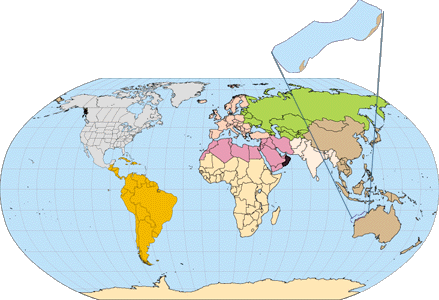
![]()
U.S. DEPARTMENT OF THE INTERIOR
U.S. GEOLOGICAL SURVEY
|
THE DINGO-MUNGAROO/BARROW AND
by Michele G. Bishop1 |

Open-File Report 99-50-E
| ABSTRACT The Northwest Shelf Province (U.S.G.S. #3948) of Australia contains two important hydrocarbon source-rock intervals and numerous high quality reservoir intervals. These are grouped into two petroleum systems, Dingo-Mungaroo/Barrow and Locker-Mungaroo/Barrow, where the Triassic Mungaroo Formation and the Early Cretaceous Barrow Group serve as the major reservoir rocks for the Jurassic Dingo Claystone and Triassic Locker Shale source rocks. The primary source rock, Dingo Claystone, was deposited in restricted marine conditions during the Jurassic subsidence of a regional sub-basin trend. The secondary source rock, Locker Shale, was deposited in terrestrially-influenced, continental seaway conditions during the Early Triassic at the beginning of the breakup of Pangea. These systems share potential reservoir rocks of deep-water, proximal and distal deltaic, marginal marine, and alluvial origins, ranging in age from Late Triassic through Cretaceous. Interformational seals and the regional seal, Muderong Shale, along with structural and stratigraphic traps account for the many types of hydrocarbon accumulations in this province. In 1995, the Northwest Shelf produced 42% of the hydrocarbon liquids in Australia, and in 1996 surpassed the Australian Bass Straits production, with 275,000 barrels per day (bpd) average. This region is the major producing province of Australia. Known reserves as of 1995 are estimated at 11.6 billion of barrels of oil equivalent (BBOE)(Klett and others, 1997) . Although exploration has been conducted since 1955, many types of prospects have not been targeted and major reserves continue to be discovered. |
INTRODUCTION There are two important Total Petroleum Systems (TPS) in the Northwest Shelf Province 3948, Australia (Fig. 1). The primary TPS, the Dingo-Mungaroo/Barrow 394801, is defined by the Jurassic Dingo Claystone as the hydrocarbon source rock, and the Triassic Mungaroo Formation, Jurassic rocks, and the Cretaceous Barrow Group as reservoir rocks. The second important TPS, the Locker-Mungaroo/Barrow 394802, includes the Triassic Locker Shale source rock and the Triassic Mungaroo Formation and the Cretaceous Barrow Group as reservoir rocks. These two petroleum systems contain one assessment unit each for the purposes of predicting hydrocarbon resources. Other minor petroleum systems are possible. For example, Permian age organic-rich rocks underlying the Locker Shale may contribute hydrocarbons to the Locker-Mungaroo/Barrow system. Coals and marginal marine rocks of the Mungaroo Formation overlying the Locker Shale could also be source rocks. Hydrocarbons derived from Paleozoic intervals may be present in the North West Cape and structural terraces such as the Enderby and Candance terraces (Fig. 2). |